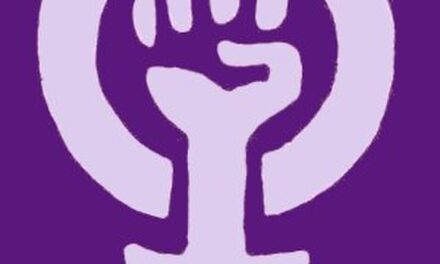The United States of America has an extensive history of overstepping the privacy rights of its citizens. This history shows a pattern of creating laws that allegedly protect American citizens when in reality, they legalize the country’s ample surveillance. Publicly and privately, the government has built a plethora of invasive surveillance tools to use at their disposal. There is speculation that these tools are being utilized to spy on protestors and pervert the constitutional right to assemble peacefully.
For a long time, the American government has fought against protestors and organizations who acted against oppressive conditions. Throughout the 1900s, citizens bore witness to the ceaseless targeting of civil rights groups and their members. Organizations such as the Black Panther Party and leaders such as Martin Luther King Jr. were victims of government surveillance and harassment. In the 21st century, the struggle has persisted, shown by the heavily armed police presence at the 2020 Black Lives Matter protests.
Throughout American history, governmental actions provided insight into the prioritization of its interests related to justice and the protection of human rights, both on a national and international scale. In recent decades, prompted by the emergence of new technologies like personal computers, the U.S. government has revolutionized its approach to human rights violations. Whilst framing every entity that has resisted the oppression deeply ingrained into America’s roots as villains, the government has expanded its means to monitor, surveil and control dissenting voices.
Over the past few decades, the U.S. has released some of its most advanced forms of privacy infiltration, most notably the Uniting and Strengthening America by Providing Appropriate Tools Required to Intercept and Obstruct Terrorism (USA PATRIOT) Act. The act, commonly referred to as the Patriot Act, was officially passed to “deter and punish terrorist acts in the United States and around the world, to enhance law enforcement investigatory tools,” among other purposes. It revised the nation’s surveillance laws, expanding the government’s authority in law enforcement and investigations against foreign and domestic targets deemed dangerous. The Patriot Act enacted new permissions and legal frameworks for the federal government under the guise of national security and protection. Provisions of the Patriot Act legalized various surveillance tactics, such as Sections 215 and 216. Section 215 permitted federal investigators to obtain secret court orders requesting third parties access to view and collect “any tangible thing” if deemed relevant to international terrorism. Section 216 permits monitoring electronic communications and user data without probable cause.
In 2013, the National Security Agency (NSA) disclosed that it had been using Section 215 to indiscriminately collect bulk metadata of American phone calls through phone service provider Verizon, such as call duration, trunk identifiers and miscellaneous “session identifying information.” This information allows any holder to identify how an individual contacted another, who was involved and where. 10 years earlier, the NSA had been exposed for collecting domestic telephone, internet and email records from major Internet service providers.
Under the pretext of analyzing and identifying terrorist activities, federal investigators have nearly unrestricted and warrantless access to private citizen data, along with permission to treat every individual as a potential suspect. The rationale behind these permissions is the belief that individuals with nothing to hide should have nothing to worry about. However, operating within the framework of a surveillance state with nearly limitless capabilities, the government can conclude any individual is a threat to national security and scrutinize an individual regardless of innocence.
Despite the Patriot Act expiring in March 2020 after failing to be renewed by Congress in 2020, federal law enforcement agencies continue to hold most of the authorities granted by the act. The surveillance infrastructure established by the act’s provisions still remains intact by other laws and provisions. Powers such as the ability to receive information from ISPs with a court order collect records from telecommunications providers, financial institutions and travel industries, among others. Also, federal agencies can request a warrant, which is routinely issued, for electronic surveillance and physical searches under the context of national security.
The nature of these powers is inherently vague for the federal government to conduct investigations into the lives of Americans indiscriminately.
Government surveillance in recent years has highlighted its monitoring of protesters in both virtual and physical spaces. The scope of protest surveillance includes the comprehensive gathering, processing, generation, analysis, utilization and storage of information concerning individuals participating in protests, irrespective of any evidence of wrongdoing. This form of surveillance is undemocratic and violates fundamental rights guaranteed by the First Amendment, specifically infringing on the right to peacefully assemble. Technologies such as cameras, license plate readers and facial recognition softwares have been used to track, follow and intimidate protestors domestically within the last three years. Although there are legal safeguards against certain modes of surveillance, these laws are underdeveloped and filled with loopholes. Laws created to protect the rights of protestors are incredibly vague and poorly established securities that protect the individual from first or third-party threats. For example, the 2018 Supreme Court decision of Carpenter v. United States ruled that obtaining cell phone location information required a warrant due to its invasive nature. However, law enforcement agencies have, at times, bypassed this requirement by obtaining cell phone data through third parties instead of cell phone companies. Furthermore, the Supreme Court has failed to specify what other forms of surveillance count as invasive surveillance monitoring.
Recently, a federal agency has collaborated with a third-party data mining and media monitoring company to surveil protests and inevitably violate civil liberties.
The U.S. Marshals Service, a federal law enforcement agency “involved in virtually every federal law enforcement initiative,” has been implicated in receiving detailed information from social media monitoring company Dataminr about the precise time and location of reproductive rights demonstrations and rallies. In real-time, Dataminr processed rally-related social media posts as they were posted and relayed summarized information about the rally to the Marshals. This information included photos of demonstrators and estimated numbers of attendees for the Marshal Service’s surveillance efforts. The scope of surveillance extended beyond immediate participants. It pulled data relating to any individual organizing, participating or even bystanders in the protests. The methods employed included analyzing data from social media platform X, personal emails and newsletters based on search terms requested by the federal agency.
This incident alone is a testament to the inadequacy of existing legal frameworks in protecting the rights and safety of individuals who openly speak out against the government or its legislation. Based on an algorithm and federal criteria, unwitting social media users were subjected to surveillance based on their involvement or proximity to constitutionally protected activity. To be targeted for engaging in constitutionally protected activities is absurd. Legislation must further prioritize a crackdown on government surveillance concerning Americans. The use of an algorithm to target individuals based on their online activities contextually recognizes the potential overreach and infringement on the right of free expression. Furthermore, relying on vague federal criteria without clear boundaries makes citizens vulnerable to unwarranted and unexpected scrutiny by federal entities.
The NSA has been reported to have direct access to the data of major US internet companies such as Facebook, Google and Apple. This data suggests that the NSA can collect data, enabling extensive surveillance of live communications and stored information. This data collection is legalized through Section 702 of the Foreign Intelligence Surveillance Act, which the FBI used to surveil the racial justice demonstrations during the Summer of 2020.
Under these conditions, marginalized individuals face a heightened risk. This risk being targeted and labeled as national threats based on their involvement or even passive interest in civil rights related activities.
The irony of a nation that proudly upholds democratic ideals yet engages in practices that compromise those ideals reveals the need for a reevaluation of federal security tradeoffs. A balance that protects the citizens’ fundamental rights etched into the Constitution is crucial for maintaining liberty for its constituents.



